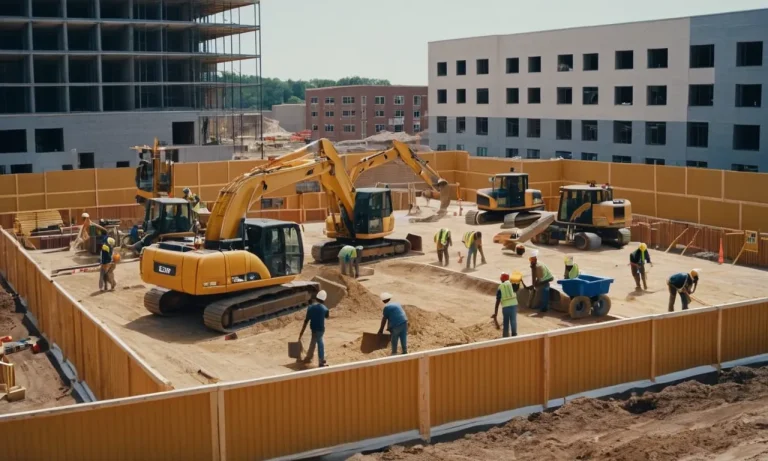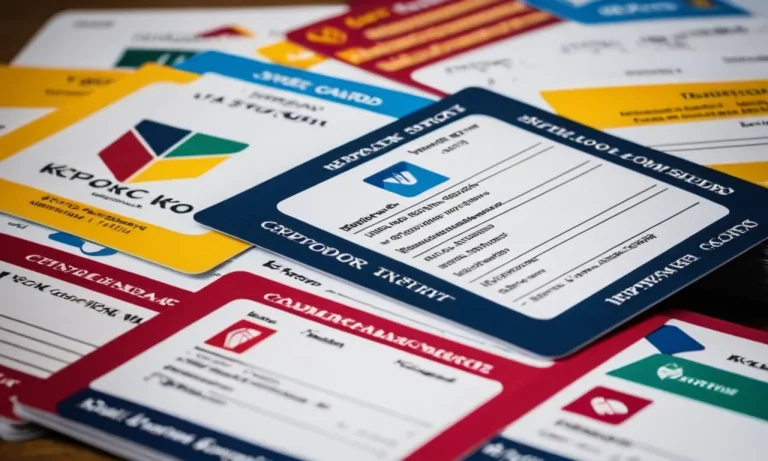Imagine being able to earn a bachelor’s degree before even stepping foot on a college campus. It may sound like a far-fetched dream, but for some ambitious and dedicated students, this is a reality. The concept of earning a bachelor’s degree while still in high school has been gaining traction in recent years, offering a unique opportunity for accelerated academic growth and potential cost savings.
If you’re short on time, here’s a quick answer to your question: Yes, it is possible to earn a bachelor’s degree while still in high school through various accelerated programs and dual enrollment options.
In this comprehensive article, we’ll explore the different pathways to obtaining a bachelor’s degree in high school, the advantages and challenges involved, and the steps you need to take to make this ambitious goal a reality.
We’ll also delve into the eligibility criteria, program requirements, and potential career implications of this unconventional academic journey.
Dual Enrollment Programs
What is Dual Enrollment?
Dual enrollment programs, also known as concurrent enrollment or dual credit, allow high school students to simultaneously earn credits toward their high school diploma and a college degree. In this innovative approach, motivated students can take college-level courses while still in high school, effectively getting a head start on their higher education journey.
😎
Benefits of Dual Enrollment
- Cost savings: By earning college credits in high school, students can save a significant amount on tuition fees and potentially graduate early from college. 💰
- Academic challenge: Dual enrollment courses provide an opportunity for students to experience the rigor of college-level coursework, helping them develop critical thinking and time management skills.
- Smooth transition: Participating in dual enrollment programs can make the transition from high school to college smoother, as students become familiar with the expectations and workload of higher education.
Eligibility and Requirements
While eligibility requirements may vary between institutions, most dual enrollment programs have certain criteria that students must meet. These typically include maintaining a minimum GPA, meeting course prerequisites, and obtaining approval from both the high school and the partnering college or university.
Some programs may also require students to take placement tests or submit standardized test scores.
Popular Dual Enrollment Programs
Many high schools and colleges across the United States offer dual enrollment opportunities. Some well-known programs include:
- Advanced Placement (AP) courses: Students can take AP courses in high school and potentially earn college credits by passing the corresponding AP exams.
- International Baccalaureate (IB) Diploma Program: This rigorous program allows students to earn an IB diploma, which is recognized by many colleges and universities worldwide.
- College in High School programs: These programs, such as NACEP-accredited programs, allow students to take college courses taught by college-approved instructors at their high school.
- Early College High Schools: These schools are designed specifically for students to earn both a high school diploma and an associate’s degree or up to two years of transferable college credit.
According to the National Center for Education Statistics, in the 2015–16 academic year, around 15% of public high school students took dual enrollment courses, demonstrating the growing popularity of these programs. 📈
Early College High Schools
Understanding Early College High Schools
Early College High Schools (ECHSs) are innovative educational institutions that provide students with an opportunity to earn both a high school diploma and an Associate’s degree or up to two years of transferable college credits concurrently.
These schools are designed to create a seamless pathway from high school to college, allowing students to save time and money on their higher education journey. ECHSs typically partner with local colleges or universities, enabling students to take college-level courses on campus or online.
Curriculum and Course Structure
The curriculum at ECHSs combines traditional high school courses with college-level classes. Students are expected to meet rigorous academic standards and follow a structured course sequence. The curriculum is designed to prepare students for the challenges of college-level work while still in high school. According to a study by the Jobs for the Future organization, over 90% of ECHSs offer a core academic curriculum, and many also provide career and technical education programs.
Advantages and Disadvantages
Early College High Schools offer several advantages, including:
- Accelerated degree completion: Students can earn college credits or an Associate’s degree while in high school, saving time and money.
- Rigorous academic preparation: The challenging curriculum prepares students for the demands of college-level work.
- Increased college access: ECHSs often target underrepresented and low-income students, providing them with opportunities they might not have otherwise.
However, there are also potential drawbacks, such as:
- Demanding workload: Balancing high school and college coursework can be stressful for some students.
- Limited extracurricular opportunities: The rigorous academic schedule may leave little time for extracurricular activities.
- Transition challenges: Moving from a high school to a college environment can be difficult for some students.
Notable Early College High School Programs
Several Early College High School programs have gained national recognition for their innovative approach and success rates. For example, the Bard College at Simon’s Rock Early College in Massachusetts allows motivated students to skip high school altogether and enroll directly in college courses after 10th grade.
Additionally, the MassBay STEM Early College High School in Massachusetts offers a STEM-focused curriculum in partnership with MassBay Community College. According to their website, over 90% of their graduates go on to pursue bachelor’s degrees. These programs exemplify the potential of ECHSs to provide students with a head start on their college education.
Online and Distance Learning Options
The Rise of Online Bachelor’s Degrees
In recent years, the landscape of higher education has undergone a significant transformation with the rise of online bachelor’s degree programs. These innovative offerings have opened up new avenues for students, including high schoolers, to pursue their academic goals without the constraints of traditional on-campus learning.
According to a report by the National Center for Education Statistics, in the fall of 2020, approximately 7.3 million students were enrolled in at least one online course, a testament to the growing popularity of this mode of education.
Accredited Online Programs for High Schoolers
While the concept of earning a bachelor’s degree during high school may seem daunting, several accredited institutions have tailored their online programs specifically for ambitious students seeking an early start.
Universities like StraighterLine and Bard College at Simon’s Rock offer dual enrollment options that allow high schoolers to earn college credits concurrently. These programs provide a rigorous academic experience while offering the flexibility to balance high school commitments.
Balancing Online Studies with High School
Pursuing an online bachelor’s degree while in high school demands a significant commitment and effective time management skills. High schoolers embarking on this path must be prepared to juggle their regular coursework, extracurricular activities, and the additional workload of college-level classes.
Seeking guidance from academic advisors and establishing a structured study routine can be invaluable in maintaining a healthy balance. Online platforms like Coursera and edX offer a wide range of courses and resources to supplement the online learning experience 🎓.
Potential Challenges and Considerations
While the opportunity to earn a bachelor’s degree in high school is incredibly exciting, it’s essential to be aware of the potential challenges and considerations. Self-discipline and time management are crucial for success in online learning environments.
Additionally, students must carefully evaluate the financial implications, as online programs may incur additional costs beyond traditional high school expenses. It’s also important to consider the potential social and emotional impact of accelerated academic pursuits on the overall high school experience 👍.
Despite these challenges, the ability to earn a bachelor’s degree in high school can provide a significant head start in one’s academic and professional journey. With careful planning, determination, and the right support system, ambitious students can unlock a world of opportunities and achieve their academic dreams at an accelerated pace 🎉.
Accelerated Bachelor’s Degree Programs
What are Accelerated Bachelor’s Degree Programs?
Accelerated bachelor’s degree programs, also known as fast-track or intensive programs, are designed to help students earn their bachelor’s degree in a shorter timeframe than traditional four-year programs.
These programs condense the coursework and allow students to complete their degree requirements in as little as two or three years, depending on the institution and program structure.
Eligibility and Admission Requirements
Eligibility and admission requirements for accelerated bachelor’s degree programs can vary, but generally, students must meet the following criteria:
- Have a high school diploma or equivalent (e.g., GED)
- Meet minimum GPA requirements (often 3.0 or higher)
- Submit standardized test scores (e.g., SAT, ACT)
- Demonstrate strong academic performance and time management skills
Some programs may also require additional application materials, such as essays, letters of recommendation, or interviews.
Time and Cost Savings
One of the primary advantages of accelerated bachelor’s degree programs is the time and cost savings they offer. By completing their degree in a shorter timeframe, students can enter the workforce sooner and start earning a higher income.
Additionally, accelerated programs often have lower tuition costs compared to traditional four-year programs, as students are taking fewer courses overall.
According to BestColleges.com, students in accelerated programs can save up to 25% on tuition costs compared to traditional programs. 😍 This can be a significant financial advantage, especially for students who need to minimize their student loan debt.
Reputable Accelerated Bachelor’s Degree Programs
Many well-known and respected universities offer accelerated bachelor’s degree programs across various fields of study. Here are a few examples:
- Arizona State University: Offers accelerated bachelor’s degrees in fields like business, engineering, and liberal arts.
- Southern New Hampshire University: Provides accelerated online bachelor’s programs in areas such as business, criminal justice, and psychology.
- Western Governors University: Offers competency-based accelerated bachelor’s degrees in fields like IT, business, and education.
It’s important to research and carefully consider the pros and cons of accelerated bachelor’s degree programs before enrolling, as they may require a more intensive workload and a strong commitment to academic success.
Conclusion
Earning a bachelor’s degree while still in high school is an ambitious and challenging endeavor, but one that can yield significant rewards for those who are dedicated and determined. Whether through dual enrollment programs, early college high schools, online or distance learning options, or accelerated bachelor’s degree programs, the opportunities are vast and varied.
As you embark on this unconventional academic journey, it’s crucial to carefully evaluate your options, understand the program requirements, and assess your readiness for the rigorous workload. With proper planning, time management, and a strong support system, you can unlock the doors to a world of academic and professional opportunities that may otherwise have seemed out of reach.
Remember, earning a bachelor’s degree in high school is not a one-size-fits-all solution, and it may not be the right path for everyone. However, for those who are up for the challenge and have a clear vision for their future, this unique educational experience can be a game-changer, setting you apart from your peers and propelling you towards success in your chosen field.






